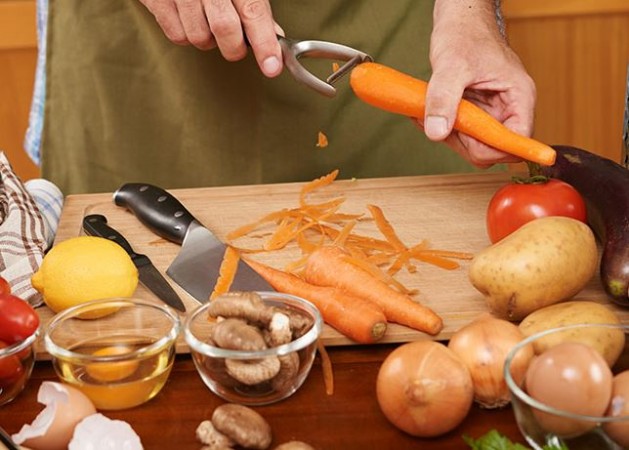
Vegetables are a treasure trove of essential nutrients crucial for our overall health. Interestingly, the peels of vegetables often contain more nutrition than the flesh. Therefore, it is advisable to cook some vegetables without peeling them. The peels of vegetables not only provide higher fiber content but also offer nutrition comparable to or even surpassing that found in non-vegetarian foods. However, some people dislike vegetable peels and tend to discard them while cooking, unknowingly losing more than half of the nutritional value. Let's explore which vegetables should not be peeled for optimal health benefits.
Potato (Aloo):
Nutrient-Rich Skin:
Potato skins are a powerhouse of nutrients, containing iron, calcium, potassium, and magnesium. The skin, often discarded, plays a crucial role in promoting the function of red blood cells. The iron content is particularly essential for enhancing metabolism.
Red Blood Cell Promotion:
Iron found in the potato skin promotes the production and function of red blood cells. These cells are vital for transporting oxygen throughout the body, supporting various physiological processes.
Metabolism Boost:
In addition to its mineral content, the potato skin aids in boosting metabolism. This makes potatoes with their skins a wholesome and nutritious choice for individuals seeking overall health benefits.
Tomato (Tamatar):
Flavonoid Naringenin Content:
Tomato skin contains a significant concentration of flavonoid naringenin. This compound is known for its anti-inflammatory properties, reducing swelling and potentially providing protection against certain diseases.
Nutritional Retention:
Leaving the skin on while cooking tomatoes ensures the retention of essential nutrients. The flavonoid content, in particular, contributes to the vegetable's overall health benefits, making it a valuable inclusion in meals.
Sweet Potato (Shakarkandi):
Rich in Fiber and Beta-Carotene:
The peel of sweet potatoes is rich in dietary fiber, beta-carotene, vitamin C, vitamin E, folate, potassium, and iron. The high beta-carotene content is converted into vitamin A in the body, supporting vision and bolstering the immune system.
Immunity and Vision Support:
The beta-carotene found in sweet potato peels supports the immune system and promotes vision. Including the peels in cooking ensures a comprehensive intake of these beneficial nutrients.
Pumpkin (Kaddu):
Nutrient-Dense Skin:
Pumpkin, often overlooked for its nutritional value, contains a skin rich in iron, vitamin E, and potassium. The beta-carotene content in the peel contributes to improved immunity and enhanced vision.
Boiling for Softness:
To make the pumpkin peel more palatable, boiling it with the skin intact is recommended. This softens the peel, making it easier to consume while retaining its nutritional benefits.
Diverse Nutrient Profile:
The pumpkin peel offers a diverse nutrient profile, making it a valuable addition to meals. By embracing the peel, individuals can enjoy a more complete and nutritious dining experience.
Including these vegetables with their peels in your diet can significantly contribute to your overall health and well-being. Embracing the nutritional benefits present in vegetable peels is a simple yet effective way to enhance the nutritional value of your meals. So, the next time you prepare these vegetables, consider leaving the peels intact for a healthier and more nutritious dining experience.
Discover How Music Alleviates Various Ailments
India's Remarkable Achievements: A Glance at Bharat Ki Baat @2023
Kerala Health Minister Orders Probe Following Doctor's Suicide Case